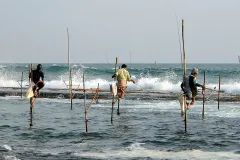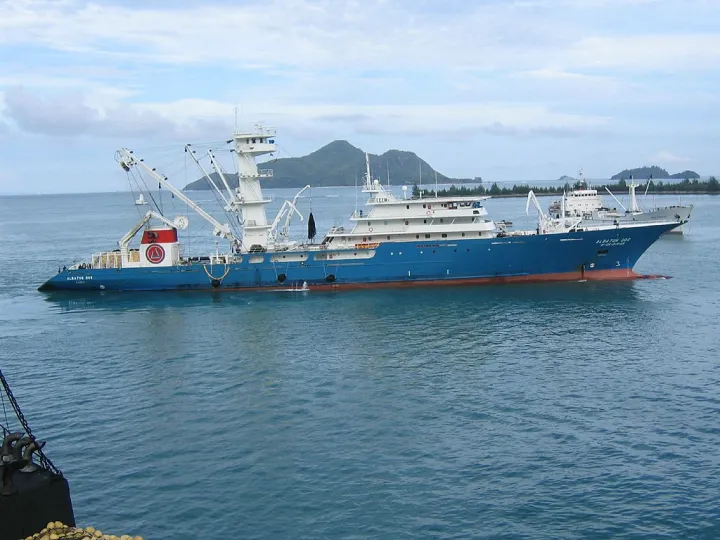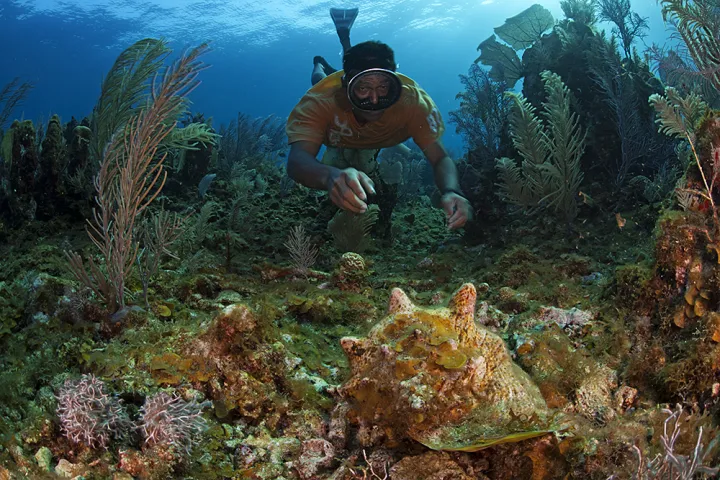Fishing for Food Security: Small-Scale Fisheries Are Key

In coastal communities across the globe, small-scale fisheries often provide most of the protein on peoples’ plates. And before that fish makes it to the table, catching it means employment for many. But as the global population climbs, demand for seafood continues to increase and climate change threatens marine life, do these fisheries have what it takes to provide food security to their communities?
A 2022 study authored by Steven Canty of the Smithsonian Marine Station and collaborator Jessica Deichmann of the Smithsonian’s National Zoo and Conservation Biology Institute (both part of the Smithsonian Working Land and Seascapes network) suggests this may not be the case; and, without significant intervention, artisanal fisheries in Developing Economy Countries (DECs) all over the world may fall short.
“Small scale fisheries are critical lifelines, and understanding how these fisheries are performing is vital for understanding how coastal communities are doing—especially as they become more vulnerable to climate change,” Canty explains. The first step in rising to such a challenge is really understanding how well the small-scale fisheries are doing—now and in the past.
That’s where Canty and Deichmann’s work comes in. The core question, as Deichmann describes it, is “Which numbers should we be looking at? Landed catches might be increasing, but when you look at that catch data in the context of human population change, it’s a different story.”
To understand how well small-scale fisheries would be able to sustain the future of their coastal communities, Canty and Deichmann examined the last six decades of trends in landed catch data for 85 DECs from the Sea Around Us database. They also looked at whether catch had been enough to meet the recommended annual intake of 10.6 kg of fish per person, which they used to determine if the per capita amount met the minimum requirements for food security of people living in coastal communities.
What they found was a mixed-bag when it comes to the long-term ability of small-scale fisheries to provide food security to those populations. Overall trends of landed catches were positive, and the catch per capita met or exceeded needs in the majority of the countries evaluated (such as Tanzania, Honduras, and Mexico). However, the one-third of countries that didn’t have the capacity to provide the recommended annual intake of fish in 2016 tended to be those with very large populations—nearly double the cumulative population faced potential food insecurity.
Members of a community are food secure when they have the physical and economic access to consistently meet their dietary needs—meaning that not only are they safe from living in hunger, but they’re safe from even having to fear it. While the majority of SSFs did have the capacity to provide food security in 2016, their future ability to do is in jeopardy for a number of reasons, ranging from a lack of effective management on the regional and national levels, to conflict with industrial fisheries and individual’s access to fish. However, the overall volume of landed catches in many small-scale fisheries is still high, so there’s no counting them out. What they need, Canty and Deichmann suggest, are significant changes to how they’re managed.
“There are characteristics particular to small-scale fisheries that make them inherently more complicated to manage than [their industrial counterparts],” the paper discusses, citing a 2007 Fisheries Research study that examines such fisheries in Latin America and the Caribbean. Characteristics like remote landing sites for catch, dispersed numbers, and competition with industrial-scale fisheries who—without comprehensive harvest limitations—contribute to the waning availability of fish.
While industrial fishery activities can be a boon for a country’s economy, their catch doesn’t necessarily translate to more food for the communities they operate out of, as much of the catch is exported to the US, EU, China or Japan or converted to livestock feed.
At present, there are a handful of regional fisheries management organizations, but they are limited by resources and scope. Generally, they only focus on key species pursued by industrial fisheries, and overseeing such vast territory proves challenging. However, there are regional management structures already in place whose standardized fishing regulations have been successfully adopted across artisanal and industrial fleets alike, such as the Central American Organization of the Fisheries and Aquaculture Sector (OSPESCA). As for these Smithsonian scientists, they’ve been collaborating with organizations like the Centro de Estudios Marinos in Honduras, which works with local communities and the NGO Rare to help design equitable marine protected areas. The groundwork is there, and one of the keys to supporting sustainable fisheries will be building on efforts like these: encouraging great community-led management actions to help promote the food security in coastal communities.
The takeaway Canty and Deichmann propose is that with the right combination of community-led and national efforts—such as locally stewarded marine-protected areas, catch limits, increased fisheries data collection, prioritization of small-scale wild-caught fisheries, and policies that improve catch accessibility—the food security of billions of people across the world’s coasts can be ensured. The most important element is assuring that all involved are held accountable—from the individual to the global level, we need to reevaluate with how we harvest and consume fish.
“These are big problems that require coordinated solutions,” Deichmann reflected. “It can feel daunting, but we know what needs to be done. It’s just a matter of how we bring all the pieces together.”



